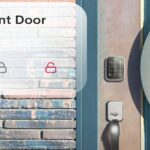I wrote an opinion piece recently that exposed some challenges in the professional home-technology integration channel. While the piece highlighted the rise of very good, very inexpensive smart-home solutions for do-it-yourselfers, the easy-cheap-DIY-products theme wasn’t the important part of the story.
The important thing was the overall landscape that includes these simpler solutions. That landscape also includes online engines for easily researching, purchasing and receiving products; mass-market installation services such as Geek Squad, Installs Inc. and brand new models like Enjoy. And especially a wholesale change in how people shop and buy. They want an easy process that is on-demand, with no uncertainties in pricing, and low-stress delivery and set-up.
I questioned integrators: What are you doing about this new reality? How can we exploit today’s on-demand economy? What can we learn from Uber and Airbnb? What can we learn from SnapAV, which pioneered this model in the custom channel?
Why has SnapAV done so well? Because dealers want to research, order, buy and receive products simply, without having to speak to sales, logistics and accounting people on the other end.
Why wouldn’t your customers want this same experience?
NEXT: The DIY Trend is Starting to Get Scary and it’s Not All about Price
So I came across this short write-up in a senior-housing newsletter that I receive – Senior Housing News (I recommend it).
This is what I had in mind when I wrote my DIY blog – just look at the world around us and see where we might fit in.
The SHN story is about a company that is partnering with Lyft to create the “Airbnb of senior living.”
San Francisco start-up Seniorly recently launched a service to fill all those short-term vacancies at senior-living facilities. It’s as “simple and easy as booking a place to stay on Airbnb,” according to the company.
It’s a simple concept: senior living facilities lose residents all the time, without notice. What can be done with all those vacant spots until the space is filled for a longer term?
Seniorly allows customers to book spaces online, like they would for Airbnb. If caretakers need a break or go on vacation, they can easily find a safe place for their loved ones. Seniorly goes a step further and partners with Lyft for transporting the guest to and from the care facility.
Now, senior living facilities might be looking at the aging-in-place movement – the DIY of senior living – and be worried about the prospects for dedicated senior-living places. But here’s a company that is looking at today’s landscape and thinking about new ways to deliver the same service they've always provided.
As with home-technology integrators, there will always be a need for senior-living facilties, but the times are changing and it makes sense to contemplate new business models based on new realities.
That’s all I’m suggesting.
btw
As I was writing this, I received an email from SHN promoting a new research paper. The pitch seemed relevant to this blog:
In 2016 alone, an estimated 5.4 million Americans have Alzheimer's disease. That number is expected to rise in the coming decades, leading to skyrocketing demand for memory care housing and services.
Gone are the days of institutional care settings for those living with cognitive impairment. Today, developers and operators are getting very creative in the ways they are designing cutting-edge housing for future memory care residents.
















